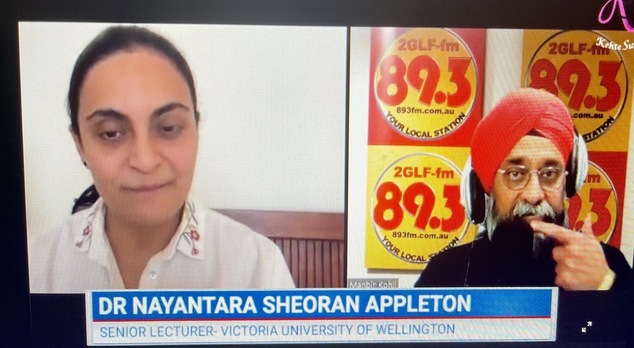By SAT News Desk
MELBOURNE, 16 July 2021: The population topic is not new in India. From ‘Do Ya Teen Bas’ (Two or three enough) and later ‘Hum Do Hamare Do’ (We two – Our two) and coercive population control during Indira Gandhi’s emergency are historical. The fact India will become the most populous nation is a foregone conclusion. The recent plan of the Uttar Pradesh govt led by Chief Minister Yogi Adityanath proposing incentives for those limiting their families to 2 kids and disincentives for those who have more than two children is generating debate and heating politics.
It also goes without saying China which had a one-child norm for many years has relaxed it and now families can have more children. The demographic consequences of the one-child policy are another subject.
Nayantara Sheron Appleton, Senior Lecturer, Centre for Science in Society, Victoria University, Wellington, New Zealand is researching Hormonal Contraceptives, Reproductive Rights, and Population Control. Born in UP, India, she describes herself as, ” I am a cis-hetero-Asian Indian immigrant female, interested in inclusions and exclusions in/from science, technology, and medicine from a feminist, queer, racial and post-colonial STS framework.”
Sydney Radio anchor Manbir Kohli (Kathe Sunte) talked to Nayantara about demography focussed on the latest UP population proposals. Explaining the subject, Nayantara says, if you go to India you see crowds in a city and feel too many people around and think this is the problem but ignore the many issues like inequality, gender disparity, economic disparity, literacy, infertility, rural-urban, and so on. A person who lives in the city does not know what is happening in the rural areas. So, the feeling is overpopulation needs to be curbed, she says.

So, to hide political, administrative, and social failures, the governments push agendas that paint excessive population as being the culprit. It is not the current government only but was earlier done by the Congress during the internal emergency, Nayantara explains.
“The population issue in UP is a political thing. It has not done well in the last 4 years and you want to convince lost development was because of too much population.”
Nayantara says India’s population is one of its greatest assets, the current use of the population issue as dog-whistling is evident. In fact, people are not the problem. Raising the population bogey is meant to hide failures. So, failure on the economic front and corruption issues can easily be diverted by the population issue. And, then there is no social security.
“Even if 50 percent of India’s population becomes middle class then it becomes the biggest consumer base in the world.”
About falling fertility, she says, ” India has rapidly declined in fertility rates, and in five years (by 2025) it will fall to 2.1, below the replacement rate. The issue of culture is also there. We had large farming families meaning more earners and when parents grow old they are looked after. If there is no one to look after in old age in the absence of social security then what happens.”
“Today the fight is for India’s future,” she says.
“The thing that people are the problem is there in our brain – too many people. I say, ” It is the love of people we need to bring back to India”.





